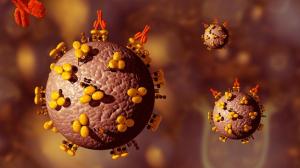11 May, 2012
We live, according to several thinkers of the contemporary, in a world that is defined by risk. One can find this argument to be a bit strange given that risk has been a constant companion throughout human history. Hunter/gatherers, and later agricultural societies faced several natural risks such as droughts, floods, and microbes that were yet unknown. These were even considered extra-human, and in most aboriginal belief systems were thought to be the domain of the spirit. In several African societies, ‘Lesa’ is the supreme spirit, and is expressed in the form of lightning. Amongst tribal groups in Himachal, village deities are thought to govern the actions of the natural world, and people make representations to these deities to ask for more or less rain, among other things.
It was one of the critical shifts of the post-Renaissance industrial world that these elemental risks were now considered knowable, and controllable. Microbes were isolated in laboratory environments by scientists like Louis Pasteur, and vaccinations could make them inconsequential. Humans could now model the world at large, and mould nature to unleash unhinged progress.
When an environmental consciousness started to emerge in the post World War II era, science was mobilized to comprehend the risks in order to ultimately eliminate them. Nuclear waste, DDT, Chlorofluorocarbons, acid rain; each of these challenged society, and each was in turn considered defeated by the combination of science and governance. Communities had been adapting to perceived risks throughout history. It was only in the 20h century that this job was taken over by the state and experts, who professionalized the study of risks and merely communicated what they considered appropriate responses to the public on a ‘need to know basis’.
Then Bhopal happened. It raised questions about the very nature of technology, about the gases and liquids that had become the building blocks of the new consumer society. Science responded by blaming administration, regulations, and the intractable bureaucracy. But in 1986, Chernobyl settled the debate. Science was no longer the religion no one dared question, and scientists no longer the priests who translated it to mortals. Ordinary citizens started to demand information so that they could—as individuals, or in groups—make their own minds about technologies and risks, and every so often, challenge scientists in the public domain or in courts.
This is a turn that many of the latter are still unable to comprehend, as if the last thirty years never happened. If some people raise doubts on the effects of genetically-modified foods, it is because they are ‘performers’, and because their ‘bread is buttered by opposition to everything’ (actual words of a leading Indian scientist). If they do not entirely believe that nuclear plants are safe, it must be because of some ulterior motive– they could even be ‘foreign funded‘. Fact is, science has escaped the confines of the laboratory or peer-reviewed journals and steadily entered the public domain. Winning arguments within the guild is no longer enough; experts now have to win over the publics too.
In other words, the translation from the laboratory to the world at large has been a weakness, even though not all scientists are equally insular. Several have pointed out that climate change is very likely occurring, but it is still mighty hard—if not outright impossible—to predict its trajectory and effects on particular places, without which policy responses are largely rudderless. Similarly, many are beginning to realize that though genetic processes are very well understood and applied in the lab and even in test sites, the change of scene between these to real-world farms (swarming with multitude of plant species, insects, birds, and other life-forms) is tremendous. This is one reason why it has been difficult to make such technologies ‘real’.
The deadly Human Immunodeficiency Virus (Copyright: Science Photo Library, Source:http://www.bbc.com/future/story/20120504-will-we-ever-have-hiv-vaccines/1)
Announcing the discovery of the Human Immunodeficiency Virus as the cause of AIDS in April 1984, then US Secretary of Health said that she expected a vaccine to be on the anvil in two years. The virus has however resisted an army of scientists for thirty years and there is little good news in sight. As Siddhartha Mukherjee neatly shows in his award-winning book, cancer researchers have proclaimed victory over the condition at various moments, only to be defeated by the inscrutable ‘enemy’ each time. Today we are forced to accept that risks are not completely knowable or surmountable, and that we must live with uncertainty. Debates on nuclear power or GM foods, therefore, can no longer be positioned as those between risk and no-risk, but should focus on its democratic management.
